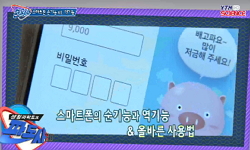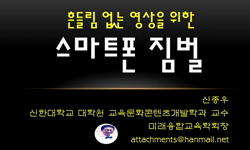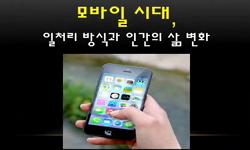Purpose: The present study aimed to investigate the change of accommodative function of vergence anomalies subjects in their 20s after near work with smartphone. Methods: Adults in their twenties (131 subjects, mean age 22.1±3.3 years) with a correct...
http://chineseinput.net/에서 pinyin(병음)방식으로 중국어를 변환할 수 있습니다.
변환된 중국어를 복사하여 사용하시면 됩니다.
- 中文 을 입력하시려면 zhongwen을 입력하시고 space를누르시면됩니다.
- 北京 을 입력하시려면 beijing을 입력하시고 space를 누르시면 됩니다.

스마트폰으로 근거리 작업 후 20대 폭주이상안의 조절기능 변화 = The Change of Accommodative Function of Vergence Anomalies Subjects in their Twenties after Near Work with Smartphone
한글로보기https://www.riss.kr/link?id=A103609557
- 저자
- 발행기관
- 학술지명
- 권호사항
-
발행연도
2017
-
작성언어
Korean
- 주제어
-
등재정보
KCI등재
-
자료형태
학술저널
-
수록면
71-80(10쪽)
-
KCI 피인용횟수
8
- DOI식별코드
- 제공처
-
0
상세조회 -
0
다운로드
부가정보
다국어 초록 (Multilingual Abstract)
Results: Monocular accommodative facility was significantly decreased in normal and CI group, and binocular accommodation facility was significantly decreased only normal group. Negative relative accommodation (NRA) decreased in 53.8% of CI group, which was different from 36.0% of normal group. In normal group of 48.0%, there was an increase in positive relative accommodation (PRA), but in CE group only 20.0% was increased. However, in CE group, the increase in PRA was greater than 1.50 D. The accommodative lag increased in 80.0% of CE group and was larger than that of the normal group(48.0%). Conclusions: this study found that the accommodative function after near work with smartphone varies depending on the vergence function of the subject. The difference in the accommodative function induced by the variation of the vergence function may be the cause of the individual subjective symptom difference after using the smartphone.
Purpose: The present study aimed to investigate the change of accommodative function of vergence anomalies subjects in their 20s after near work with smartphone. Methods: Adults in their twenties (131 subjects, mean age 22.1±3.3 years) with a corrected and uncorrected visual acuity of 0.8 or better were examined and classified into normal, convergence insufficiency (CI), and convergence excess (CE) according to the function of convergence. The accommodative facility, relative accommodation, and accommodative lag were measured after watching the smartphone for 30 minutes.
Results: Monocular accommodative facility was significantly decreased in normal and CI group, and binocular accommodation facility was significantly decreased only normal group. Negative relative accommodation (NRA) decreased in 53.8% of CI group, which was different from 36.0% of normal group. In normal group of 48.0%, there was an increase in positive relative accommodation (PRA), but in CE group only 20.0% was increased. However, in CE group, the increase in PRA was greater than 1.50 D. The accommodative lag increased in 80.0% of CE group and was larger than that of the normal group(48.0%). Conclusions: this study found that the accommodative function after near work with smartphone varies depending on the vergence function of the subject. The difference in the accommodative function induced by the variation of the vergence function may be the cause of the individual subjective symptom difference after using the smartphone.
국문 초록 (Abstract)
본 연구에서는 20대 폭주이상안이 스마트폰을 사용하였을 때의 조절기능 변화를 알아보고자 하였다. 방법: 양안 교정시력 및 나안시력이 0.8이상인 20대 131명(22.1±3.3세)의 시기능을 검사하고 ...
본 연구에서는 20대 폭주이상안이 스마트폰을 사용하였을 때의 조절기능 변화를 알아보고자 하였다. 방법: 양안 교정시력 및 나안시력이 0.8이상인 20대 131명(22.1±3.3세)의 시기능을 검사하고 폭주 기능에 따라 정상안, 폭주부족안, 폭주과다안으로 분류하였다. 30분간의 스마트폰을 이용한 영상 시청 후에 조절용이성, 상대조절력 및 조절래그 변화를 측정하였다. 결과: 단안 조절용이성은 정상군과 폭주부족군에서 유의하게 감소하였으며 양안 조절용이성은 정상군만이 통계적으로 유의하게 감소하였다. 음성상대조절력이 감소하는 경우는 폭주부족군 중 53.8%로 정상군의 36.0%와 차이가 있었다. 48.0%의 정상군에서 양성상대조절력의 증가가 나타났으나 폭주과다군은 20.0%만이 증가하였다. 그러나, 폭주과다군의 경우 양성상대조절력의 증가폭이 1.50 D 이상으로 높았다. 폭주과다군의80.0%에서 조절래그가 증가하여 정상군(48.0%)보다 조절래그 증가 비율이 더 컸다. 결론: 본 연구를 통하여 대상안의 폭주기능에 따라 일정 시간의 스마트폰 사용시에 나타나는 조절작용이 달라짐을 밝혔다. 이러한 폭주기능 차이에 의해 유발되는 조절기능의 차이는 스마트폰 사용 시 나타나는 개인별 자각증상 차이의 원인이 될 수 있을 것으로 보인다.
참고문헌 (Reference)
1 김재성, "휴대폰 전자파가 인체의 시각 자극 반응에 미치는 영향" 한국전자파학회 14 (14): 606-615, 2003
2 권기일, "컴퓨터 게임 시 안구운동의 방향에 따른 조절기능의 변화" 한국안광학회 17 (17): 177-184, 2012
3 박경주, "스마트폰 시청 후 나타난 근거리 사위 및 폭주근점의 변화" 한국안광학회 17 (17): 171-176, 2012
4 권기일, "스마트폰 사용에 의한 40대 중년층의 조절 및 폭주기능 변화" 한국안광학회 21 (21): 127-135, 2016
5 김지혜, "스마트폰 및 책을 이용한 근거리 작업에 의한 사위 및융합버전스 변화" 한국안광학회 21 (21): 385-392, 2016
6 김세일, "근거리 작업 시 종색수차에 따른 양안시의 변화" 한국안광학회 20 (20): 219-228, 2015
7 정승희, "VDT 증후군의 환경적 요인과 증상에 대한 연구" 한국안광학회 14 (14): 65-69, 2009
8 Cacho Martínez P, "Treatment of accommodative and nonstrabismic binocular dysfunctions : a systematic review" 80 (80): 702-716, 2009
9 Ciuffreda KJ, "The scientific basis for and efficacy of optometric vision therapy in nonstrabismic accommodative and vergence disorders" 73 (73): 735-762, 2002
10 KISA(Korea Internet & Security Agency)., "Suvey on the internet usage"
1 김재성, "휴대폰 전자파가 인체의 시각 자극 반응에 미치는 영향" 한국전자파학회 14 (14): 606-615, 2003
2 권기일, "컴퓨터 게임 시 안구운동의 방향에 따른 조절기능의 변화" 한국안광학회 17 (17): 177-184, 2012
3 박경주, "스마트폰 시청 후 나타난 근거리 사위 및 폭주근점의 변화" 한국안광학회 17 (17): 171-176, 2012
4 권기일, "스마트폰 사용에 의한 40대 중년층의 조절 및 폭주기능 변화" 한국안광학회 21 (21): 127-135, 2016
5 김지혜, "스마트폰 및 책을 이용한 근거리 작업에 의한 사위 및융합버전스 변화" 한국안광학회 21 (21): 385-392, 2016
6 김세일, "근거리 작업 시 종색수차에 따른 양안시의 변화" 한국안광학회 20 (20): 219-228, 2015
7 정승희, "VDT 증후군의 환경적 요인과 증상에 대한 연구" 한국안광학회 14 (14): 65-69, 2009
8 Cacho Martínez P, "Treatment of accommodative and nonstrabismic binocular dysfunctions : a systematic review" 80 (80): 702-716, 2009
9 Ciuffreda KJ, "The scientific basis for and efficacy of optometric vision therapy in nonstrabismic accommodative and vergence disorders" 73 (73): 735-762, 2002
10 KISA(Korea Internet & Security Agency)., "Suvey on the internet usage"
11 Pölönen M, "Reading e-books on a near-to-eye display : comparison between a small-sized multimedia display and a hard copy" 33 (33): 157-167, 2012
12 Lara F, "General binocular disorders : prevalence in a clinic population" 21 (21): 70-74, 2001
13 Rouse MW, "Frequency of convergence insufficiency in optometry clinic settings" 75 (75): 88-96, 1998
14 Thomson WD, "Eye problems and visual display terminals the facts and the fallacies" 18 (18): 111-119, 1998
15 박미정, "Changes in Accommodative Function of Young Adults in their Twenties following Smartphone Use" 한국안광학회 19 (19): 253-260, 2014
16 Benjamin WJ., "Borish's clinical refraction" Butterworth-Heinemann 939-, 2006
17 Benjamin WJ, "Borish's clinical refraction" Butterworth-Heinemann 927-931, 2006
18 Tosha C, "Accommodation response and visual discomfort" 29 (29): 625-633, 2009
19 KISA(Korea Internet & Security Agency)., "2013 Research report on internet addiction in Korea"
동일학술지(권/호) 다른 논문
-
연령별 정시안과 근시안의 각막굴절력과 굴절이상 연구: 초등학생부터 대학생까지
- 한국안광학회
- 오경근
- 2017
- KCI등재
-
- 한국안광학회
- 이동엽
- 2017
- KCI등재
-
- 한국안광학회
- 강성수
- 2017
- KCI등재
-
- 한국안광학회
- 김미진
- 2017
- KCI등재
분석정보
인용정보 인용지수 설명보기
학술지 이력
| 연월일 | 이력구분 | 이력상세 | 등재구분 |
|---|---|---|---|
| 2022 | 평가예정 | 재인증평가 신청대상 (재인증) | |
| 2019-01-01 | 평가 | 등재학술지 유지 (계속평가) |  |
| 2016-01-01 | 평가 | 등재학술지 유지 (계속평가) |  |
| 2012-01-01 | 평가 | 등재학술지 유지 (등재유지) |  |
| 2009-01-01 | 평가 | 등재학술지 선정 (등재후보2차) |  |
| 2008-01-17 | 학회명변경 | 영문명 : The Korean Ophalmic Optics Society -> The Korean Ophthalmic Optics Society |  |
| 2008-01-01 | 평가 | 등재후보 1차 PASS (등재후보1차) |  |
| 2006-01-01 | 평가 | 등재후보학술지 선정 (신규평가) |  |
학술지 인용정보
| 기준연도 | WOS-KCI 통합IF(2년) | KCIF(2년) | KCIF(3년) |
|---|---|---|---|
| 2016 | 0.62 | 0.62 | 0.53 |
| KCIF(4년) | KCIF(5년) | 중심성지수(3년) | 즉시성지수 |
| 0.58 | 0.58 | 0.691 | 0.17 |




 DBpia
DBpia






